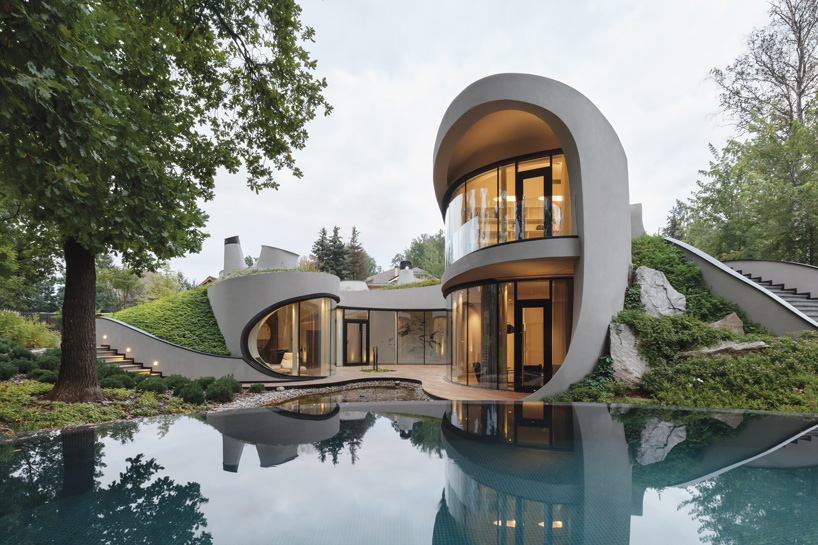How CDA Architects Deliver Cutting-Edge Solutions for Sustainable Architecture
Wiki Article
Comprehending the Collaborative Refine In Between Engineers and Designers in Modern Construction Projects
The joint process in between architects and designers is vital in modern-day building tasks, as it balances design intent with design feasibility. Discovering these dynamics exposes understandings that could dramatically impact job end results and overall market requirements.The Relevance of Partnership
The joint synergy between designers and designers is important for the effective understanding of any building task. This partnership combines distinct experience and point of views, allowing the combination of cutting-edge design with useful engineering options. By collaborating, architects and engineers can make sure that a task not just fulfills aesthetic and functional requirements however likewise follows safety and security, sustainability, and financial constraints.Collaboration promotes a common vision, promoting the placement of objectives and assumptions from the start. This placement is crucial in addressing possible obstacles and mitigating risks that can emerge throughout the task lifecycle. In addition, a joint strategy permits for the reliable appropriation of sources, maximizing both time and price.
The value of partnership reaches the iterative process of style and construction, where feedback from designers can notify architectural choices, bring about even more possible and sustainable layouts. On the other hand, engineers can motivate engineers to think artistically concerning exactly how to achieve architectural stability without compromising imaginative intent. Eventually, the collaborative partnership in between architects and engineers is not just advantageous; it is basic to the creation of premium, useful, and cutting-edge constructed environments that meet the demands of culture.
Interaction Techniques and Tools
Efficient interaction techniques and devices are vital for fostering partnership between designers and designers throughout the job lifecycle. Developing clear channels of interaction is important to make certain that all team members are straightened with job purposes, timelines, and responsibilities. Routine conferences, both in-person and virtual, supply opportunities for stakeholders to go over progression, address issues, and make notified choices.Utilizing job management software application, such as BIM (Structure Information Modeling) platforms, enhances partnership by making it possible for real-time sharing of style adjustments and technological specifications. These tools help with transparency, allowing engineers and engineers to imagine adjustments and analyze their influence on the overall task.

Shared Objectives and Job Vision

Developing shared objectives involves open dialogue and a comprehensive understanding of each technique's contributions. Engineers generally concentrate on design intent, spatial connections, and customer experience, while engineers highlight architectural stability, systems capability, and compliance with policies (cda architects). When these viewpoints look at this now are aligned, the result is a natural task that complies with both innovative desires and technical feasibility
Furthermore, a distinct task vision fosters accountability among group participants, urging each participant to take ownership of their function in accomplishing the wanted end result. Regular check-ins and collaborative workshops can additionally enhance this commitment, enabling dig this adjustments to be made as the job progresses. Inevitably, a common vision not just boosts synergy yet additionally boosts the quality of the final deliverable, leading to successful job conclusion.
The Function of Innovation
Leveraging modern technology has come to be important in improving cooperation in between architects and engineers. Structure Details Modeling (BIM) stands out as a pivotal innovation, enabling both engineers and designers to create comprehensive 3D designs that envelop design intent and structural stability.
Additionally, cloud-based systems make it possible for smooth cooperation, enabling task stakeholders to accessibility and upgrade job data from anywhere. This promotes a society of openness and responsibility, as changes can be tracked and assessed in real-time. Furthermore, mobile applications more improve interaction, giving on-site teams with prompt access to project specifications and updates.
Emerging innovations such as expert system and artificial intelligence are also starting to contribute in anticipating evaluation, assisting teams identify potential issues prior to they emerge. Inevitably, the duty of innovation in architecture-engineering partnership not only boosts operations performances yet additionally improves advancement, resulting read more in more effective project end results. By welcoming these technical developments, architects and designers can guarantee a more cohesive and effective collective process throughout the building and construction lifecycle.
Instance Research Studies in Successful Collaborations
Many case researches show the profound influence of efficient collaborations in between architects and designers on job end results. One significant example is the cooperation on the High Line in New York City, where landscape engineers, engineers, and city coordinators worked with each other to transform an abandoned railway into a dynamic public park. This multidisciplinary approach not just enhanced the aesthetic top quality however additionally made sure architectural security and ecological sustainability.Another excellent case is the style and building and construction of the Sydney Concert Hall. The collaboration between engineer JÃ ¸ rn Utzon and architectural designer Ove Arup exemplified ingenious analytic. Their collaboration enabled the iconic shell-like style while resolving complex engineering obstacles, ultimately resulting in a classic architectural masterpiece.
The Burj Khalifa in Dubai additionally shows the importance of collective initiatives. cda architects. The integration of architecture and engineering proficiency allowed the task group to achieve unprecedented elevations while sticking to safety regulations and aesthetic vision
These examples highlight the significance of communication, count on, and shared goals. In today's intricate building and construction environment, such partnerships are essential to navigating obstacles and supplying jobs that fulfill both useful and visionary goals.
Verdict
In final thought, the collaboration in between designers and engineers is essential for the success of modern building jobs. Effective interaction methods, a shared task vision, and the combination of advanced modern technologies are important elements that promote this partnership.Report this wiki page